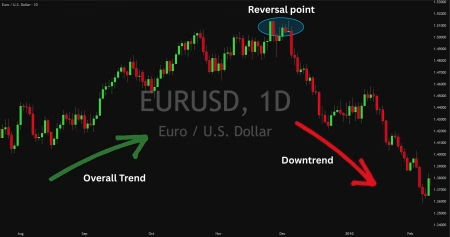The stock market is exciting, full of chances to make money. But, it’s important to know the risks and rewards before you start. Quick profits might seem appealing, but success in trading takes hard work, learning, and careful planning.
This guide will show you how to trade stocks with confidence. You’ll learn to make smart choices and increase your chances of financial success. It doesn’t matter if you’re new to trading or have experience. This article will give you the tools and knowledge to succeed as a stock trader.
Key Takeaways
- Stock trading requires a deep understanding of market dynamics and a commitment to continuous learning.
- Developing a comprehensive trading plan is crucial for success, as it outlines your goals, risk tolerance, and strategies.
- Staying updated on market trends and economic indicators can provide valuable insights to inform your trading decisions.
- Practicing with a paper trading account can help you hone your skills and test your strategies without risking real capital.
- Diversifying your investments and managing risk are essential for building a sustainable trading portfolio.
Commit to Learning for Stock Trading Success
To be a successful stock trader, you must commit to learning. Study price patterns and trends on stock charts. Also, learn about fundamental analysis by looking at balance sheets and financial statements. This helps you understand a stock’s real value.
First, learn the basics of stock trading. Know how the stock market works, including exchanges and indexes. Learn about different strategies like buy-and-hold and day trading.
Leverage Educational Resources
Use many educational resources to grow your knowledge. Read books, articles, and podcasts on technical and fundamental analysis. Also, find mentors who can share their experience.
- Invest in your education by reading books by renowned investors like Warren Buffett, Benjamin Graham, and Peter Lynch.
- Stay up-to-date on industry news and trends through reputable financial publications.
- Enroll in online stock trading courses to develop a comprehensive understanding of the market.
Remember, becoming a successful stock trader is a journey. Embrace the learning process. This will help you make smart and profitable trading decisions.

“The stock market is filled with individuals who know the price of everything, but the value of nothing.” – Phillip Fisher
Create a Trading Strategy for Stock Trading Success
Creating a detailed trading plan is key for your stock trading journey. It should match your investment goals and how much risk you’re willing to take. This plan will guide your trading choices.
Start by setting up your trading strategy. This includes how you’ll enter and exit trades, how big your positions will be, and how you’ll manage risks.
Use a paper trading account to test your strategies before risking real money. This step helps you spot what works and what doesn’t. Your strategy should fit your unique style, risk level, and preferences.
Key Components of a Successful Trading Plan
- Clearly defined investment goals and risk tolerance
- Detailed entry and exit strategies for your trades
- Disciplined position sizing and risk management rules
- Continuous performance evaluation and strategy refinement
- Commitment to ongoing education and market research
As you improve your trading strategy, focus on small steps. Look at your winning and losing trades to find areas for betterment. Update your trading plan to boost your profits over time.
“The secret to successful trading is to develop a strategy that aligns with your investment goals and risk management approach, and then to consistently apply it with discipline.”
The path to lasting success in stock trading is a well-thought-out trading plan. Spend time crafting a strategy that suits you. Trust the process as you move through the markets.

Stay Updated on Market Trends
It’s key to know about market trends, economic conditions, and industry news for smart trading. Watch key economic signs like interest rates, job numbers, and GDP growth. Also, keep an eye on company earnings and industry news that can change stock prices.
Use 24/7 news from CNN, BBC, The New York Times, Reuters, and The Globe and Mail. Set up alerts with Google Alerts and Feedly for news you care about. Social media like X, Facebook, Instagram, and YouTube also share the latest news and updates.
Leverage Market Intelligence for Smart Trades
Use this market info to spot trading chances and guess future price moves. Keep up with economic signs, earnings, and trends. This info helps you make smart trades that fit the current market.
| Metric | Weekly Change | Year-to-Date |
|---|---|---|
| Dow Jones Industrial Average | 1.0% | 14.8% |
| S&P 500 Index | 0.9% | 23.0% |
| NASDAQ | 0.8% | 23.2% |
| MSCI EAFE | -0.4% | 7.7% |
| 10-year Treasury Yield | 0.0% | 0.2% |
| Oil Prices | -8.9% | -4.0% |
Knowing about market trends, economic signs, earnings, and industry news is vital for smart trading. By using this market insight, you can succeed in the stock market.
Open Your Brokerage Account
Starting your stock trading journey begins with opening a brokerage account. This step gives you access to the financial markets and the tools to trade. Look for an online broker that suits active traders. They should have low fees, fast trade execution, and an easy-to-use platform.
To pick the right brokerage account, consider these factors:
- Commission-free stock and ETF trades – Most major discount brokers now offer this, making it cheaper to build your portfolio.
- Options trading costs – Expect to pay between $0.50 to $0.75 per options contract with most brokers.
- Mutual fund expenses – Some brokers may charge up to $74.95 in maximum commissions for mutual fund trades.
- Overall broker rating – Top online brokers usually get an average rating of 4.5 out of 5 stars from experts.
Look at the broker’s account options too. This includes IRAs and self-employed retirement plans like SIMPLE IRAs, SEP IRAs, and individual 401(k)s. Many brokers have no account minimums, so you can start with a small investment.
| Brokerage Firm | Commission-Free Trades | Account Minimum | Bonus Offer |
|---|---|---|---|
| Fidelity | Yes | $0 | Up to $100 Cash Bonus |
| Charles Schwab | Yes | $0 | 500 Loyalty Rewards Points |
| TD Ameritrade | Yes | $0 | $0 Trade Commissions for 60 Days |
After choosing a reputable online brokerage account, opening and funding your account takes about 15 minutes. Just provide the needed personal and financial info, and you’re set to start trading on your preferred platform.
Practice with a Paper Trading Account
Before you invest real money, it’s key to sharpen your trading skills with paper trading. A paper trading account lets you try out strategies, improve your methods, and gain confidence without losing money. It’s like a real market simulation, helping you get used to the trading platform and practice making orders.
Online brokers like Interactive Brokers, TradeStation, and TD Ameritrade have full-featured paper trading platforms. They let you practice paper trading without any financial risk. These simulators offer a real trading feel, with virtual money and market data, so you can test your strategies.
For new investors, using a paper trading account is especially helpful. It makes learning easier and helps avoid expensive mistakes before you start trading for real. By practicing often, you can improve your skills, feel more confident, and create a solid trading plan that fits your goals and risk level.
Keep in mind, paper trading doesn’t include real-world factors like slippage, spreads, or commissions. But it’s still a great way to practice trading and test your strategies in different market conditions.
Make the most of simulated trading and work on improving your skills. The knowledge you gain from paper trading will be very useful as you start your stock market investing journey.
Set a Realistic Trading Budget
Setting a realistic trading budget is key to success in stock trading. Your budget should match your financial resources and risk tolerance. It’s wise to risk only 1-2% of your total capital on each trade.
Managing your position sizing well helps limit losses. Successful day traders often risk less than 1% to 2% of their account per trade. This helps them handle market ups and downs and keep trading.
Starting with a small trading account, like $30,000 to $50,000 or more, is a good idea. This size account provides a safety net. It lets you practice risk management and improve your trading skills without risking too much.
“Discipline, emotional control, and sticking to a predetermined trading plan are key aspects of successful day trading.”
Day trading can be tough due to professional competition, taxes, and emotional biases. But, with a realistic trading budget and good risk management, you can succeed. Stay disciplined and focused on your trading plan to achieve long-term success.
- Avoid risking more than 1-2% of your overall capital on each trade
- Start with a relatively small trading account, such as $30,000 to $50,000 or more
- Carefully manage your position sizing to limit downside exposure
- Develop discipline, emotional control, and a predetermined trading plan
Trade Stocks with Different Order Types
As a savvy stock trader, knowing the different order types is crucial. These types can greatly affect your trading strategy and success. Let’s look at some common order types you should know.
Market Orders
Market orders are popular for their quick execution. They ensure your order is filled right away. But, they don’t guarantee a specific price. So, you might pay more or get less than you hoped for, based on the market.
Limit Orders
Limit orders let you set a price you’re willing to pay or receive. This is great for buying at a certain price or selling at a minimum. But, your order only gets executed if the market price meets your set level.
Stop-Loss Orders
Stop-loss orders are key for managing risk. They turn into market orders when a certain price is reached. This helps prevent big losses by selling a stock automatically when it falls to a set level.
There are more order types like stop-limit, all-or-none, and immediate-or-cancel orders. Each has its own use and can be helpful in various trading situations.
Understanding the order types is vital in the stock market. Knowing the different options helps you make better decisions and improve your trading strategy.
“Mastering order types is key to becoming a successful stock trader. Each order type has its own advantages and drawbacks, so it’s important to understand when and how to use them effectively.”
Start with Small Investments
Investing in the stock market is exciting, but start small and focused. Beginners should trade fractional shares to diversify their portfolio. This method helps build trading skills and manage risk.
Embrace Fractional Shares
Fractional shares let you invest in top companies with small amounts. You can buy a part of a share, not the whole thing. This way, you can diversify without spending a lot.
This strategy is great for a balanced portfolio. It lets you access many stocks that might be too expensive otherwise.
Concentrate on a Few Stocks
Don’t spread your money too thin at first. Focus on a few stocks you can keep an eye on. This helps you understand the companies better.
As you get more experience, you can add more stocks to your portfolio. Remember, the goal is to learn and make smart choices.
Starting small and focused is key to a successful investment journey. It helps you build a strong foundation and feel confident in the market.
“The best way to grow your wealth is to start investing, even with small amounts. Fractional shares allow you to diversify your portfolio affordably and manage your risk.”
Be Cautious with Penny Stocks
Investing in penny stocks is risky. These stocks trade under $5 and are often speculative. They are traded over-the-counter (OTC) and can lead to big losses.
Microcap stocks, with a market cap under $250-$300 million, face fraud risks. Pump and dump scams are common, causing investors to lose money. These scams involve false promotions to raise the stock price, then selling at a profit.
- Penny stocks have quick price changes and are hard to buy and sell.
- OTC securities with little info are the riskiest, says OTC Markets Group.
- Be cautious of unsolicited pitches for penny stocks. Use FINRA’s BrokerCheck to check if they are registered and if there are complaints.
Unless you’ve done deep research on a penny stock, it’s wise to avoid them. Look into safer options like fractional shares or ETFs. They offer broad market exposure with less risk.
“Penny stocks are often highly speculative and illiquid, with limited public information available. Traded over-the-counter (OTC), penny stocks carry a high risk of significant losses, making them unsuitable for many investors.”
Track and Review Your Performance
It’s important to check how well you’re doing in trading. Look at your wins and losses to see what works and what doesn’t. This helps you make better choices and improve your trading skills.
Measure and Analyze Your Trades
Keep an eye on important numbers like return on capital and profit factor. These numbers tell you how well your trading is doing. Also, watch your win-loss ratio and how often you make money.
Use charts to see patterns in your trading. Tools like Seeking Alpha Premium, Empower, or WallStreetZen Premium can make tracking easier. They give you deeper insights into your trading.
Refine Your Trading Strategies
Figure out which strategies work and which don’t. Look at the market, your decisions, and how you manage risk. Use this info to improve your trading plan.
Get advice from seasoned traders or use AI tools to boost your performance. Always keep learning and reviewing to get better at trade performance, performance analysis, and strategy evaluation.
“The key to successful trading is not just about making winning trades, but also about understanding and learning from your losses.”
Conclusion
Successful stock trading and investing need commitment, knowledge, and discipline. Knowing the stock market basics, having a solid trading strategy, and managing risks well can help. This way, you boost your chances of making it big in the long run.
Learning, adjusting your plans, and staying objective are crucial for a profitable stock trader. The path to becoming great at stock trading might look tough, but it’s doable. Keep learning, stay updated, and focus on managing risks to tap into the financial markets’ potential.
Think of stock trading as a marathon, not a sprint. Face challenges head-on, celebrate your victories, and learn from setbacks. With hard work and a strong commitment to your goals, you can achieve market success.








